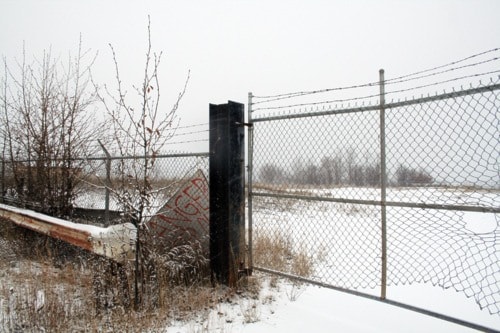Ministry of Transport and Infrastructure spokesperson Kate Trotter said there is no contaminated groundwater seeping into Burns Lake from the discontinued Ministry of Transportation and Highways yard, on Francois Lake Drive.
According to Trotter, the eight acre site is now being administered by the Ministry of Citizens Services on behalf of the province.
She said the site was found to be contaminated with petroleum hydrocarbons, which can include hexane, benzene, toluene, xylene, naphthalene and fluorine as well as other constituents of gasoline, jet fuels, mineral oils and other petroleum products.
Long term exposure to any of these chemicals can have significant health effects, including, but not limited to, cancer.
The site is located adjacent to Burns Lake, which is the only supply of fresh drinking water for the village, but Trotter said the lake is unaffected by the contamination.
Site investigation undertaken in 1993 first identified the contamination, however since then, remediation efforts have been undertaken including soil excavation and the installation of a groundwater containment system.
Groundwater quality in three monitoring wells down hill from the containment trench had previously exceeded acceptable standards.
A waste discharge permit was issued in 1998 in association with the groundwater containment system, which Trotter said is an underground vertical barrier that prevents the migration of contaminated groundwater towards Burns Lake.
She said, "Contaminated groundwater captured by the barrier is pumped back to a holding tank where it is properly filtered and treated. This water is monitored and tested as per Ministry guidelines."
During 2010 the system was reevaluated and as a result, additional groundwater monitoring wells were installed, the system design was modified and the permit was modified in February 2011 to reflect the changes.
The updated system has been in operation since July 2011.
"The land beyond the groundwater containment system towards Burns Lake was tested this fall and confirmed that no contaminated groundwater is getting past the containment system into the nearby watercourses. However, this testing did identify another area of concern Southwest of the property."
Trotter said that the environmental consultants conducting the testing are experts in the field. "Work is underway to determine the best way to remediate this area. Remediation work is anticipated to occur in the spring or early summer of 2012," Trotter added.
Two other brownfield sites in Burns Lake are also in the midst of remediation. These sites fall under the jurisdiction of the Ministry of Environment.
Remediation at the Husky Oil Ltd. site on the corner of Hwy. 16 and Government St. [now used as a parking lot] started in January of 1994 and 11 years later, the property is still being evaluated.
Suntanu Dalal Ministry of Environment media spokesperson said that considerable remediation of the site was previously completed between 1994 and 2005.
"In January 2010, Husky filed a notice of off site migration with respect to potential contamination along the adjacent lane way. Discussions with Husky’s contractors indicate that investigations concluded to date suggest conditions on and off site do not represent a high risk."
Dalal said that remediation at the site is still ongoing and some in-situ remediation trials have since been undertaken.
The Shell Canada Products site, which is located adjacent to the Husky site, is owned by Parisbridge Ltd.
According to the Ministry, during January 2008, Shell Canada also reported an off site migration.
In August 2009, a demolition permit was issued for the site, but the Ministry has restricted any future use by imposing a detailed site investigation requirement.
"The Ministry’s decision restricts future land use until Shell Canada has applied for and obtained either; a determination that the site is no longer contaminated, a voluntary remediation agreement, an approval in principle of a remediation plan, or a certificate confirming the satisfactory remediation of the site."
Jeff Gabert, spokesperson from Shell Canada said that the remediation process is more complicated because the company is leasing the site. "We are not the owners, but we are considering purchasing the site from the owner."
Gabert said that while nothing is official, the company has had some fruitful discussions with the owners.
Gabert said the property will be vacant for quite some time as testing needs to be undertaken over a number of years.
"This is not an unusual practice."
He said once remediation is complete there is a wide array of options for future use, but that the final options depend on the Ministry of Environment. They can include redeveloping the site for another business purpose or even turning the property over to the municipality.
"In other similar situations, community gardens have been built."
He said it is too early to say if the property would likely be turned over to the municipality, or if there would be any price tag attached.
"I hope the people of Burns Lake understand that all this takes time. We are fully aware that the property is in the centre of town. We are working towards taking the fence down, but would have to block off any entrances to the site so that people don't park there due to liability issues."
"There is still contamination in the soil. We are actively working through this. Shell Canada is celebrating its 100 anniversary this year. We have a long history and want a long future. We do have a vested interest in the remediation of the property in Burns Lake."
